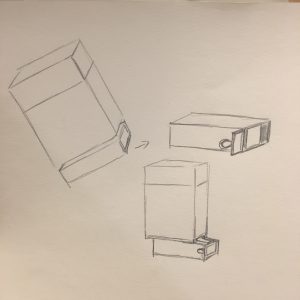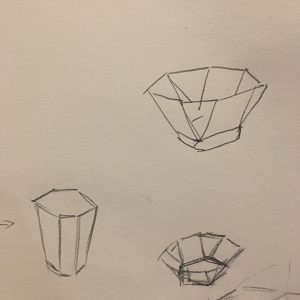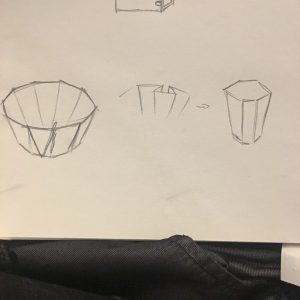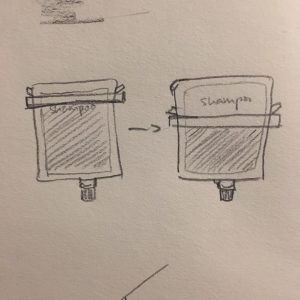1) Explore articles published in the New York Times within the last month
– What was the most interesting visual that you found (photograph, diagram etc.) and why was it so powerful to you? Include the image and the link in your post.
The image was powerful to me because of the high contrast in colors. At first glance, it looked like a painting, or an art project. Looking at it closely, I realized that the orange “dots” in the image are chimpanzees. And I was very curious of the purpose of making such a high contrast image.
– Given what you learned in this article, how different do you think the environment be 50 years from now (the year 2070)?
The camera used to shoot this photo was originally used to shoot the galaxies in the universe. However, the scientists now use the same camera to keep track of the endangered animals because thermal energy released from the animals allows them to be highly visible in infrared camera. And it’s very hard to spot these animals at night due to low visibility. However, the hot rocks, rain, and other situations sometimes might be caught as “animal” in the camera. So the scientists are still improving the equipment and plans to have it for sale in the future. In the year 2070, there will be more animals that either go extinct or become endangered. However, the rate of this tragedy happening might be slower than it should be due to these high-tech inventions.
– In what ways do you think these realities will impact your work and life 50 years from now?
The species extinction will definitely motivate me, and all the designers, to consider issue like this while we are designing products. Just like the infrared camera, I feel the responsibility to contribute in saving the world. More importantly, this harsh reality also serves as an alert that constantly reminds me not to pollute the earth. I will be aware of any action I do.
– How might these realities affect your final project design ideas?
Since we’ve been talking about the environment a lot, I only focus on how we are affecting the water and air. After reading this article, I realized that it is not just the environment. What we do potentially threaten other species’ life. As a result, for my final project, I want to address a broader issue and bring in the idea of “we are killing the animals”.
2) Conduct independent research on Social Resiliency.
- How does social resiliency differ from infrastructural and urban resiliency?
Social resiliency is the resiliency of people in the society, while the infrastructural and urban resiliency is the resiliency of physical facilities and infrastructures.
- How would you explain social resiliency to a friend or family member?
There is an invisible bond between people and the government that needs to be strengthened. There is also bond among the citizens. They need to build trust and compassion in relation to each other.
- Why might social resilience be important in the context of climate change (think about Hurricane Sandy or other environmentally related natural disasters etc.).
When there is a natural disaster coming, the whole region will probably be chaotic. When the emergent situation happens, if there is a strong bond between the citizens and the government. The government will be able to give out instructions easily. Since the citizens trust the government, they will be more likely to follow the instructions instead of panicking. For the aftermath, citizens will gather together and help each other out if they have strong social resilience. They are a united community instead of individuals isolated from each other.
- How important do you think it is for designers to consider and encourage resiliency among people in their work? Why?
It is very important because social resilience is in fact a prerequisite of infrastructural and urban resilience. As long as people are united and cooperate well with the government, the fixing and rebuilding process will be done more smoothly and easily. In order to achieve it, designers can help inventing something that assist the government to manage the whole city, such as apps.
-What is an experience you have had, or an object/design that you have, that you feel supports social resiliency in you? (i.e. makes you feel stronger, not alone, connected to the earth, other people, animals, the planet, prepared, capable and able to deal with changes etc.).
I feel connected to the community when the Parsons fire happened a week ago. When the actual fire happened, even though I wasn’t there, I heard all the students and faculties were very organized and efficient in terms of leaving the building. After the fire, I got email updates from school everyday. And everyone is cooperative. It feels like we are one big community, where we understand the situation and help each other out.
- How might design encourage and invite social resiliency?
A good design is able to connect people and offers an easy way for people to better interact with each other.
- Would you like your final project to support social resiliency?
Definitely if I could because it is very important to make people feel connected to the society. Also I believed that making a good design should somehow contribute to the society in a positive way.
3) Develop three final project ideas. What will you make and why? (an object, clothing, set of tools, skill manual, a design for connecting you to other people, animals or the earth, creates meaningful social connections with others etc.) Include sketches for each idea (and bring these sketches to class next week). For each idea, answer the following:
Cigarette Box:

- What is your idea and in what ways will this object/design be useful to you over 50 years of change? Think about how each design could have meaning and be useful in your daily life for several decades.
My idea is to create a separate box/ space/ container that is attached to the cigarette box to collect cigarette butts. I don’t have to throw away cigarette butts on the street. (My only problem is that I might not be smoking for that many years.)
2) How will this design be resilient (used in more than one way etc. and/or encourage social resiliency through its usage)?
It can be also used to store wasted gum. The design encourages people to not throw away “tiny” but “toxic” trash on the streets. When one person starts using it, the people around will see it and start following.
3) What specific event(s) of environmental change will it help YOU adapt to or address?
Cigarette butts thrown away by people cause air and water pollution. And they also poison the fish in the water.
4) How will this design be repaired?
The opening of the tiny container uses sliding mechanism, and it’s easy to put it back if it falls off.
5) What materials will you use for this design given what you have learned this semester about natural/biological/recycled materials? (Consider how climate change might affect the availability of some materials.
I will use biodegradable plastic/ paper for the outer part, and fire-resistant material for the inner part.
6) Which of the Long Life Design criteriadoes this design fulfill?
It definitely addresses a broader issue of saving the environment by doing small actions. The container is very easy to make in terms of manufacturing process, and it will be pretty cheap.
Collapsible Bowl:


- What is your idea and in what ways will this object/design be useful to you over 50 years of change? Think about how each design could have meaning and be useful in your daily life for several decades.
I want to make a bowl that is collapsible and has multifunctions. When it expands, it can be used as a bowl, but when it collapses, it can be used as a cup. It’s useful in daily life and saves plenty of space. Having multiple functions will alleviate mass production and consumption.
2) How will this design be resilient (used in more than one way etc. and/or encourage social resiliency through its usage)?
As I mentioned, the bowl can be used both as a bowl and a cup.
3) What specific event(s) of environmental change will it help YOU adapt to or address?
There will be less production and consumption, which decreases the use of resources.
4) How will this design be repaired?
There will be costumer service that fixes the bowl by taking apart the “petals” and replace a new one.
5) What materials will you use for this design given what you have learned this semester about natural/biological/recycled materials? (Consider how climate change might affect the availability of some materials.
I’m thinking of using bamboo or ceramics.
6) Which of the Long Life Design criteria does this design fulfill?
It saves money because people can buy one product that can be used for two purposes. It’s easy to produce in quantities and for costumers to use. The material is safe and calls for people buying less product.
Shampoo packaging:

- What is your idea and in what ways will this object/design be useful to you over 50 years of change? Think about how each design could have meaning and be useful in your daily life for several decades.
People always complaints about not being able to pour out all of the shampoo. Inspired by toothpaste squeezer, I want to design a shampoo packaging that will have no wasted shampoo. It’s useful for almost everyone on daily basis.
2) How will this design be resilient (used in more than one way etc. and/or encourage social resiliency through its usage)?
Physically, the design can fit any storage place and easy to carry around.
3) What specific event(s) of environmental change will it help YOU adapt to or address?
The shampoo waste may poison the water. Reducing waste as much as possible alleviates this problem.
4) How will this design be repaired?
Since the material for packaging will be soft and flexible, I don’t think it will be so easily broke.
5) What materials will you use for this design given what you have learned this semester about natural/biological/recycled materials? (Consider how climate change might affect the availability of some materials.
I might use biodegradable plastic because I want a transparent material.
6) Which of the Long Life Design criteria does this design fulfill?
The cost won’t be hight. The material is safe. The design itself is fresh and visually pleasant. Also, it addresses a broader issue of shampoo waste.